Residential fire sprinkler systems are inexpensive, reliable, and save lives. So why don’t all homes have them?
The mandatory installation of fire sprinklers in certain types of commercial structures has dramatically increased fire safety in the United States, and those benefits extend to residences that install sprinklers as well. The National Fire Protection Association (NFPA) reports that the death rate per 1,000 fires was 88% lower in properties with home fire sprinklers than in those without them between 2015 and 2019. In addition, civilian injuries were reduced by 28%, firefighter injuries dropped by 78%, and residential fire sprinkler systems that operated were effective at controlling a fire 97% of the time.
These statistics beg the question: If fire sprinklers are so effective at saving lives and reducing property damage, why aren’t they always installed in homes? This article examines the safety impact of residential fire sprinklers and their potential benefits and costs, plus answers additional frequently asked questions about these systems.
Are you looking to buy components or accessories for a home sprinkler system? If so, feel free to check out our selection of home fire sprinklers, fittings or system components, and risers, or just use the search bar at the top of the page to find what you’re looking for.
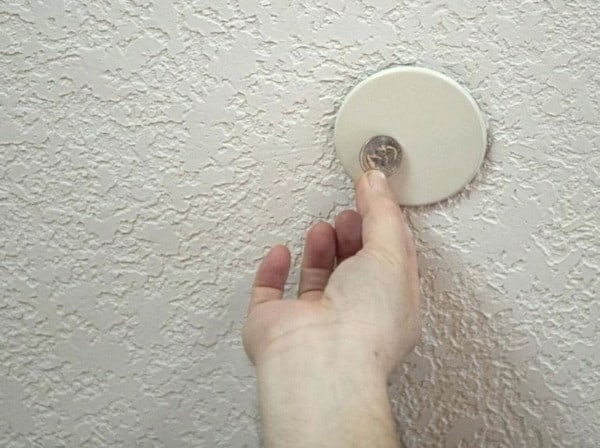
The good news: millions of home fires occur each year, but the overall number has decreased
According to NFPA estimates, US fire departments responded to about 346,800 home fires per year between 2015 and 2019, and households handle another projected 11.5 million minor residential fires per year without calling emergency services.
The fantastic news about reported home fires and the overall deaths associated with them is that both statistics have roughly halved between 1980 and 2020, though this decline has flattened quite a bit between 2006 and 2020. The decades-long decrease is largely attributed to safety improvements in various equipment, such as heaters, cooking equipment, and irons that automatically shut off, as well as arc fault circuit interrupters that prevent electrical fires. Given that smoking materials are one of the leading causes of home fires and this number dropped 67% between a 1980-1984 study and a 2011-2015 report, both safer cigarettes and the decreasing US smoking rate likely also play a role in the overall decrease in residential fires.
The bad news: home fires, while fewer in number, have become more dangerous thanks to modern construction materials and furnishings
However, not all the trends are positive. While the rate and number of home fires have dropped, the increasing use of lightweight construction materials in the past 30 years has created additional risk during a fire. According to NFPA, a structure using lightweight materials “burns quicker, fails faster,” and “collapses without warning.” The organization states that the average window to escape a fire in a structure made with traditional, dimensional construction is about 15 minutes, whereas the opportunity to escape drops to as few as only two minutes in a home using lightweight construction materials.
The global independent safety science company UL estimates that lightweight materials are used in “approximately one-half to two-thirds of all new (built after the mid-1990s) 1 and 2 bedroom homes” and “60% of roof structures in the U.S. are constructed with lightweight wood truss construction techniques.” In addition, the widespread use of synthetic materials in modern home furnishings can cause fires to spread more quickly and spur “accelerated flashover,” which is the simultaneous and total ignition of all fuel sources in a room. A quicker flashover rate makes it far more difficult to escape a burning structure alive.
“Today’s homes are burning so much faster than they were years ago, due to all the lightweight construction being used and the amount of synthetic materials,” says Phil Tammaro, a firefighter with the Billerica Fire Department in Massachusetts. “The amount of time that firefighters have to safely work inside these environments … is drastically decreasing.”
These factors influence the fact that “the overall home fire death rate per 1,000 reported fires” was higher in 2020 than in 1980, despite an over 50% decrease in overall fires and deaths over the same period. The common use of these fast-burning construction and furnishing materials makes a strong case for installing residential sprinklers.
“Residential fire sprinklers slow down the progress of the fire,” says Tammaro. “It allows families that extra time to get out safely.”
The impact of residential sprinklers
Much like their commercial counterparts, residential sprinklers are incredibly effective at saving lives and property. According to NFPA’s latest numbers, homes with sprinklers have an 88% lower civilian death rate in reported fires, a 28% lower civilian injury rate, and a 78% lower firefighter injury rate while reducing property damage by about 62% — from an average loss of $21,700 per fire to $8,200.
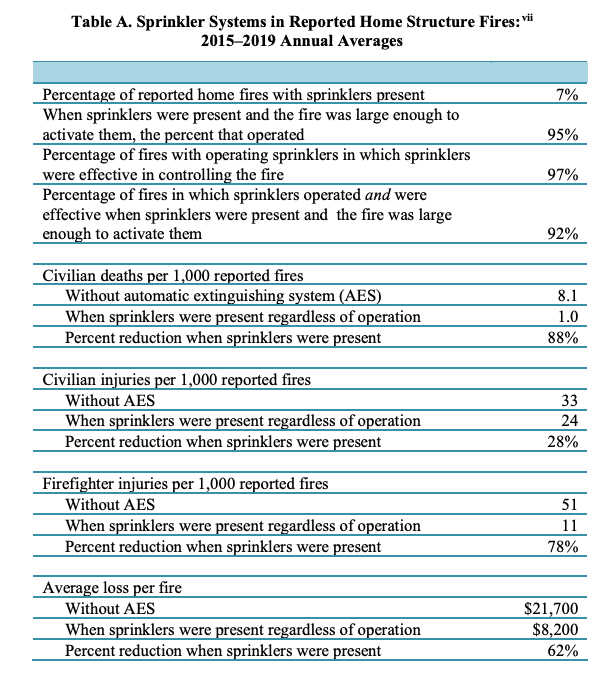
As the table above illustrates, residential fire sprinkler systems were also reliable, operating in 95% of fires large enough to activate them, while being effective in 97% of those cases. And other statistics, with caveats, are even more impressive. NFPA’s separate “US Experience with Sprinklers” report tracks all fire sprinklers (not just residential). It shows that in 8% of cases in which fire sprinklers failed to activate, it was because the system had been shut off 57% of the time. So, if you remove the systems that were manually taken offline from the stats, that’s a system failure rate of only about 3%.
Despite their reliability and effectiveness, NFPA reports that fire sprinklers were present in only 8% of reported home structure fires between 2015-2019, and The Fire Protection Research Foundation previously estimated that only about 6% of US homes were equipped with them in 2013.
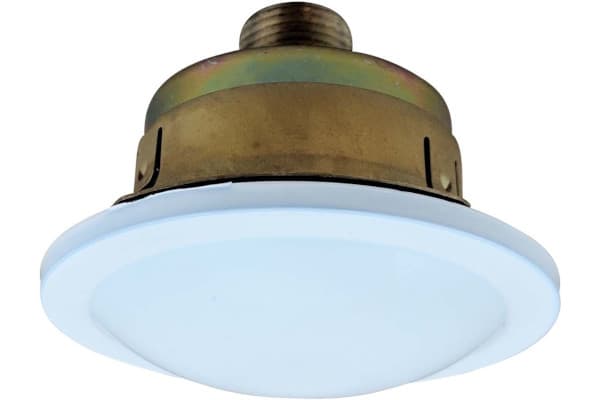
FAQs about home fire sprinklers
How much does a system cost?
Unfortunately, there aren’t frequently updated, definitive stats on the cost of home fire sprinklers, and the final expense can vary quite a bit by:
- Location: places where the government mandates residential fire sprinklers for new homes (e.g., Maryland) and other areas with high demand naturally have more installers, and thus competition, influencing the cost.
- System costs can vary based on whether a building is new construction or an existing structure requiring a retrofit.
Nevertheless, some recent estimates put 2022 numbers at “$0.50 to $4 per square foot to install a sprinkler system in an unfinished home, and $2 to $7 per square foot for existing homes.” And a 2013 study of 51 homes in 17 communities across the US by The Fire Protection Research Foundation found that the average cost per square foot of installing home sprinklers was $1.35, adding up to an average total cost of $6,026 per system.
This is a reduction from the average of $1.61 per square foot found in a similar study conducted in 2008, and the drop may reflect increased competition among installers, improved installation methods, changes in NFPA standards aimed at lowering costs, and the adoption of ordinances requiring home sprinklers in more communities. Again, it’s important to note that the cost can vary significantly based on location and structure; for example, the average cost per square foot of installation was as low as $0.85 in a home in Elk Grove, CA, and as high as $2.44 for a home in Prince Georges County, MD in the 2013 numbers. Additional factors that impact the cost include the piping materials used in the system (CPVC, PEX, black steel, or copper), the local water supply, “system requirements and extent of coverage … permit and inspection fees, system design type, custom versus tract homes, foundation type, and the existence of statewide sprinkler regulations.”
But to put these cost in perspective — an average of $1.35 per square foot and $6,026 total — consider the average expenses of popular home remodeling projects in comparable years (admittedly, all before recent inflation):
- An average kitchen remodel was about $20,474.
- Average bathroom remodels would range from $6,000 to $14,000 per bathroom.
- Installing wall-to-wall carpet was roughly $5 to $8 per square foot.
- Insulating an attic/basement ran about $1.75 to $3.50 per square foot.
There are no reliable numbers on how a fire sprinkler installation will affect the resale value of a home and thus offset the cost, though having one will improve marketability and value. Lower insurance rates may also soften the expense. Back in 2008, NFPA estimated that reductions in homeowner’s insurance premiums from installing sprinklers varied from 0 to 10%, with an average reduction of 7%. And a survey “of property and casualty insurers by HFSC showed that discounts as high as 35% are offered for homes with sprinklers.” Regardless of and beyond estimated numbers, a call to your homeowner’s insurance provider will quickly reveal the true discount.
“It was a great, pleasant surprise to find out the cost of the system was less than the cost of the landscaping I put on the new house,” remarked Chief Brian Black of the Anderson County, SC Fire Department. Black was motivated to install sprinklers in his new home after his wife and two children barely escaped from a fire that destroyed their last one.
“A fire sprinkler system would have easily contained or controlled the fire, maybe even extinguished the fire, if it … had been installed in my home,” said Black. “That was why when we built our new home, it was without question that there would be a fire sprinkler system built into it.”
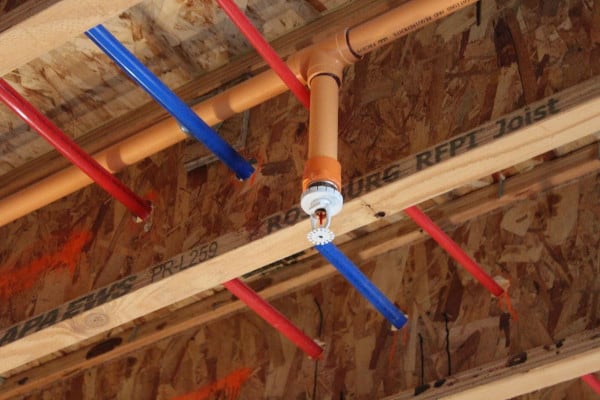
What kind of maintenance do home fire sprinklers require, and how durable are they?
The maintenance required on residential sprinklers is minimal, especially compared to their commercial counterparts. Each owner is provided with a specific set of instructions for maintenance and testing by the installer, but the essential steps include:
- On a regular basis (recommendations vary from once a month to once per year, but annually is typical) open the system test valve to make sure water flows and that the alarm works, if there is one.
- Conduct an occasional visual inspection of the sprinkler heads and any exposed piping and valves.
- Winterize the sprinkler pipes as you would other non-climate-controlled water pipes in a cold area.
- Make sure the control valve is always left open, so the sprinkler works in an emergency.
- Don’t paint over, block, or otherwise damage sprinkler heads, and replace them if they are damaged.
With very minimal maintenance, a home fire sprinkler system is designed to last decades. In 1985, Scottsdale, Arizona passed an automatic residential fire sprinkler ordinance mandating that all “all new structures … be equipped with an automatic fire sprinkler system, regardless of square footage, including residential structures.” In 2008, the City of Scottsdale Fire Department conducted a survey of residents whose homes had been built within two years of the law’s passage: “Residential Fire Sprinkler Reliability in homes older than 20 years old in Scottsdale, AZ.”
Of respondents who answered “yes” or “no” to the following questions (excluding “unsure “or “not answered” categories):
- Only 11% (16/142) indicated that the system “ever had a leak or maintenance problem.”
- 100% (133/133) of respondents indicated that their “fire sprinkler system [was] still in operation.”
Will home fire sprinklers malfunction and cause water damage? In the event of a fire, how bad will the water damage be?
Sprinklers rarely malfunction. The Central Savannah River Area Society of Fire Protection Engineers states that “[t]he chance of a defective head is less than 1:16,000,000 — less than your chance of winning the Lottery! The chance of an accidental discharge is considerably less.” And when the system does trigger in the event of a fire, only the sprinkler head or heads that sense a specific temperature (usually 145-155 degrees Fahrenheit) activate, and thus only those that are closest to the flames.
The majority of the time, only one sprinkler head is needed to control a fire, whereas “90% of all fires are controlled with six or fewer heads … and a study conducted in Australia and New Zealand covering 82 years of automatic sprinkler use found that 82% of the fires which occurred were controlled by two or fewer sprinklers.”
Finally, the amount of water used by sprinklers is about 90% less than the water used if firefighters have to respond to and extinguish a fire. And, of course, any water damage is preferable to a pile of ash or the potential for injury and death.
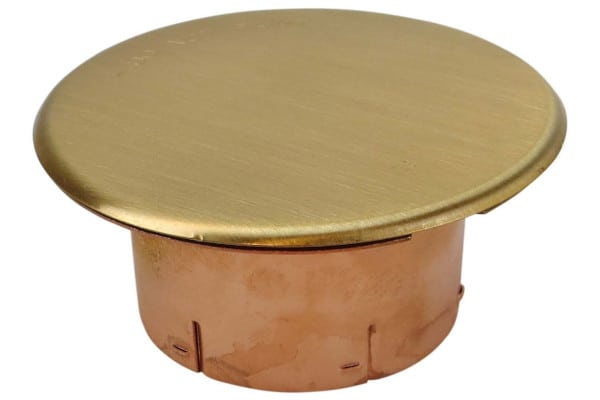
Residential fire sprinklers are an effective, affordable method of protecting lives and property
Las Vegas resident Anne Mazzola credits fire sprinklers with saving her home and possibly her husband’s life. A group of contractors had been applying a final coat of sealant to a new wood floor when the combustible chemicals ignited.
“I’m sitting at my drafting table and I hear an explosion. I race out of the room … and I see these enormous red and orange flames pushing their way out of those doors, out of that living room space,” recalls Mazzola. “And I hear my husband screaming, ‘Get out, get out! Fire, fire, fire!’”
Fortunately, the sprinkler system deployed and quickly extinguished the fire before it spread.
“The fire was out, just like that,” says Mazzola. “I just kept thinking, no one had to think; it was just that fast. The [fire] superintendent did say that not only did the sprinklers certainly help save my husband’s life because he had been trapped in his office area — and it would have been near-impossible for him to get out without being burned from the fire — he also did gravely mention, those sprinklers, going off in the zones that they needed to go off, protected and saved 95% of my house.”
Given their efficacy, reasonable cost, and low maintenance requirements, residential fire sprinklers are something homeowners should seriously consider when planning a new build or renovations to an existing home. In the next installment of this series, we’ll take an in-depth look at the options for residential installations, including the materials that can be used, an explanation of system components, and the unique considerations for both new construction projects and retrofits.
If you’re looking to buy components for new or existing home fire sprinklers, QRFS offers a range of sprinklers, system components, risers, and more!
If you have any other questions about residential fire sprinklers or need help finding an item, call us at +1 (888) 361-6662 or email support@qrfs.com.
This blog was originally posted at blog.qrfs.com. If you found this article helpful, check us out at Facebook.com/QuickResponseFireSupply or on Twitter @QuickResponseFS.


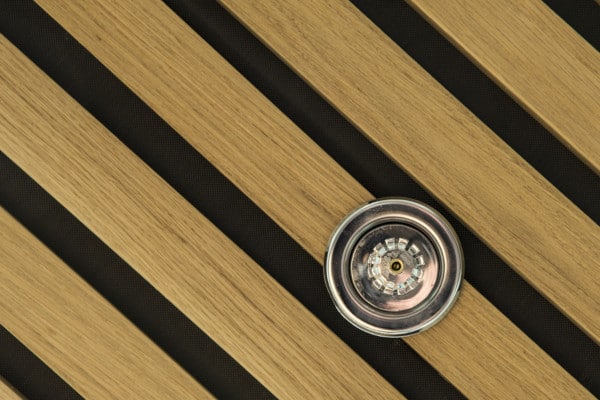
Would like to install sprinklers
Carlos, we are excited you want to install fire sprinklers. To get started (whether answering initial questions or moving forward with an approved design), we recommend having a fire professional help you navigate your installation. You can connect with our fire contractors, engineers, and code experts (they have 150+ years of combined experience!) through our “Ask a Pro” service. A fire professional will provide guidance based on your local fire code or design requirements and suggest the next steps. You can submit your question or requirements at qrfs.com/ask-a-pro.
Please contact me ASAP I am seeking a install
We do not currently provide referral services, but here is a guide to finding a good one; good luck!
It’s great that you elaborate on the fact that having sprinklers in your home can help keep your family safe in the event of a fire. I want my new home to be as safe as possible for my family, so I’m thinking about having fire sprinklers installed in it. I’m going to search for a good business in my area that can install some fire sprinklers for me.
Residential fire sprinklers are a necessity for home safety, reducing fire damage and saving lives. Very valuable information shared in this article.